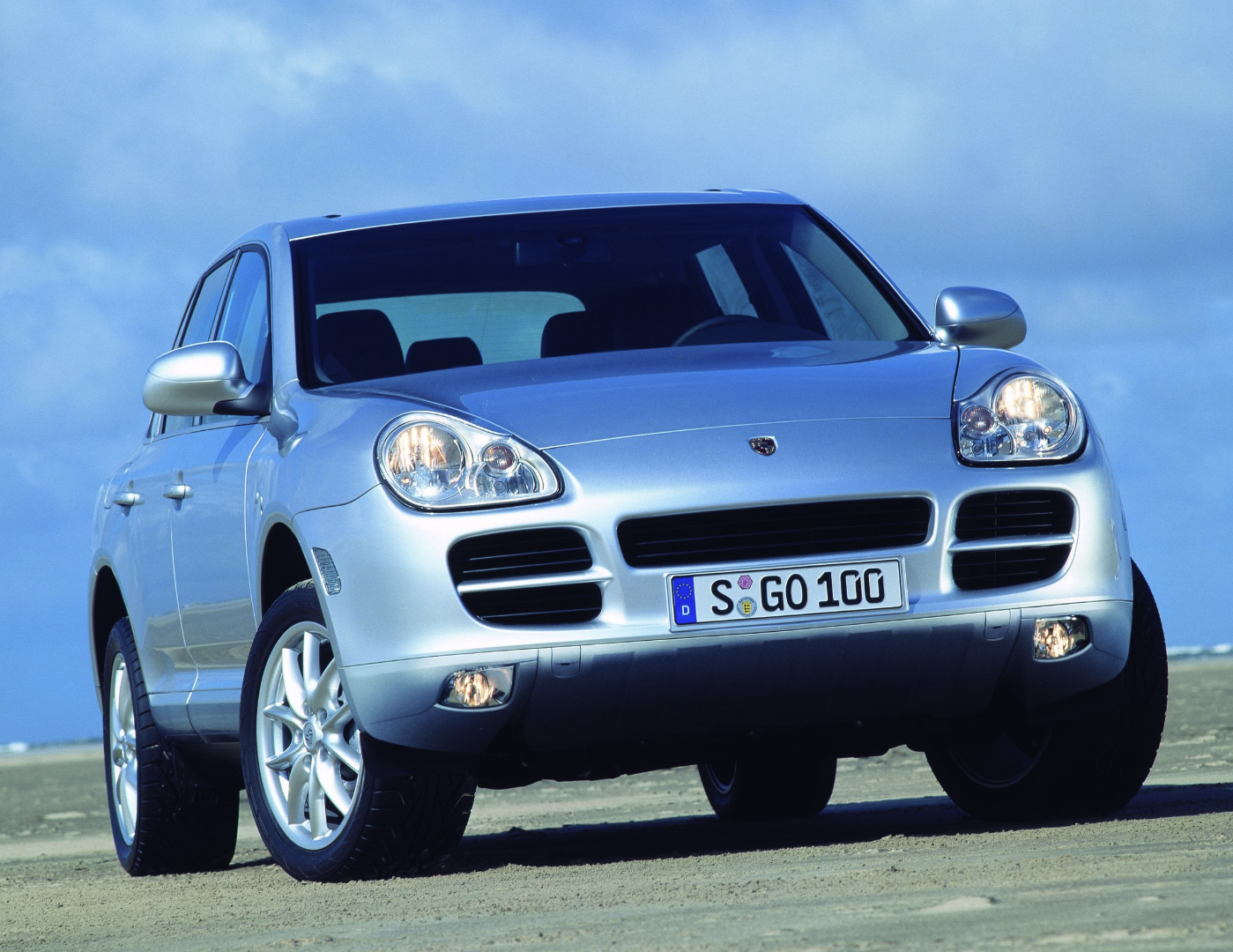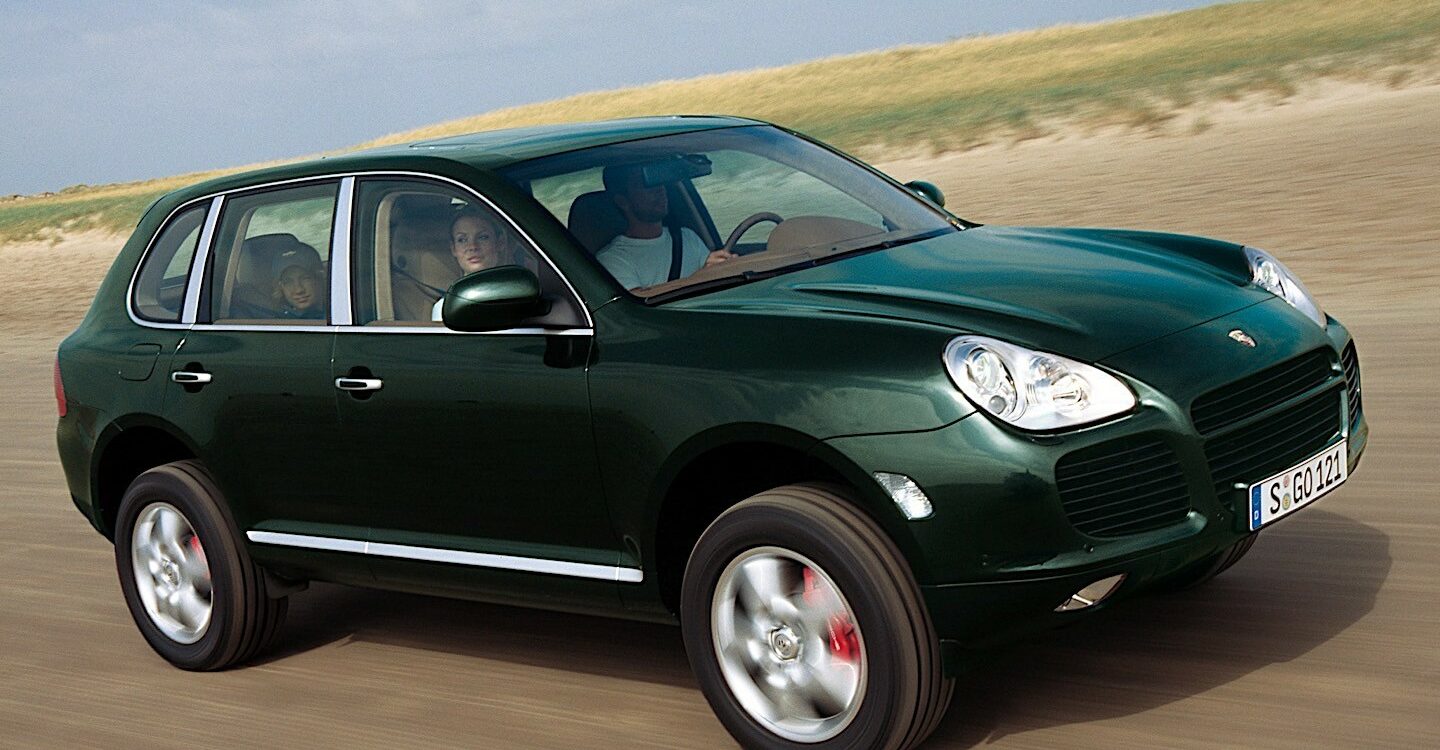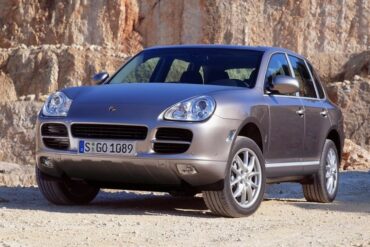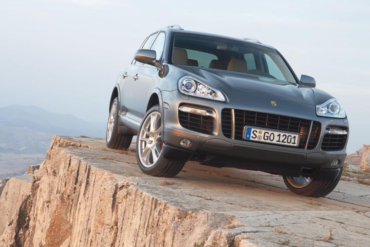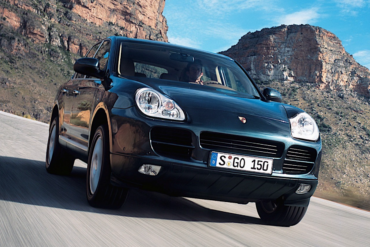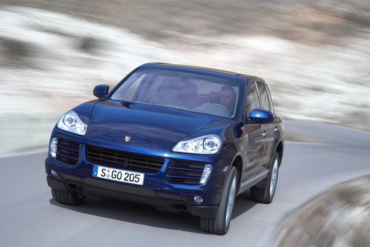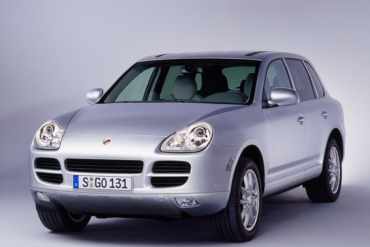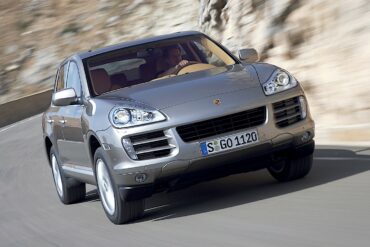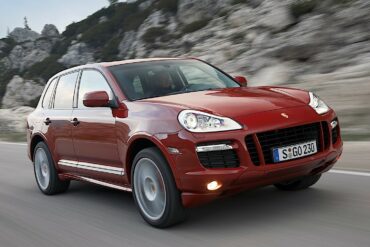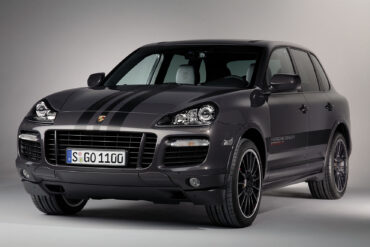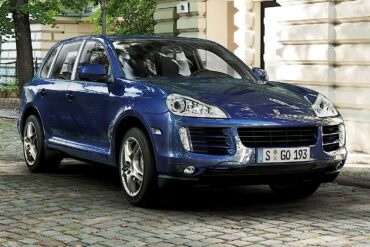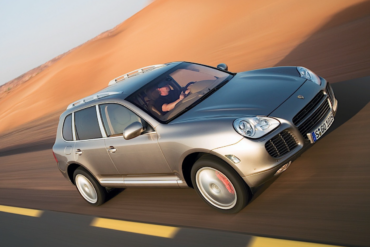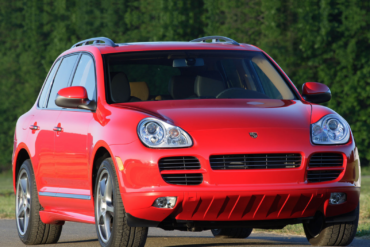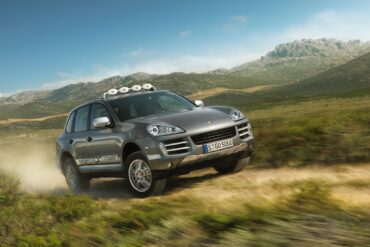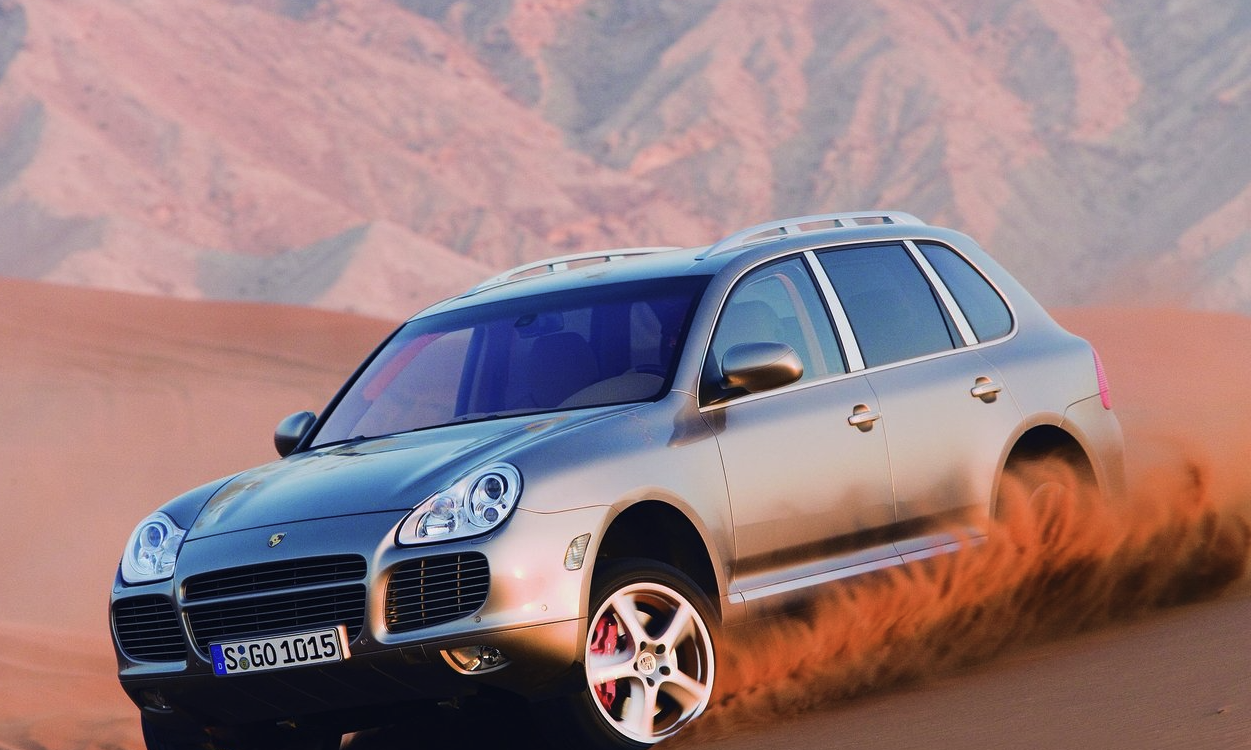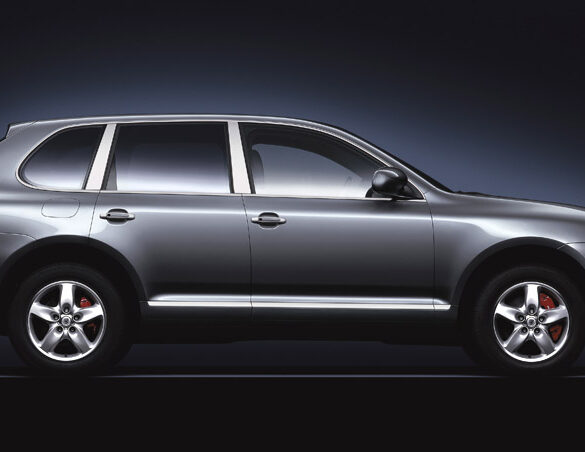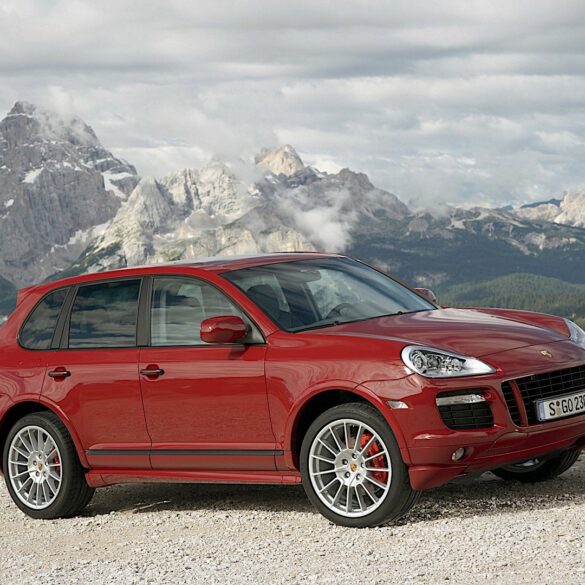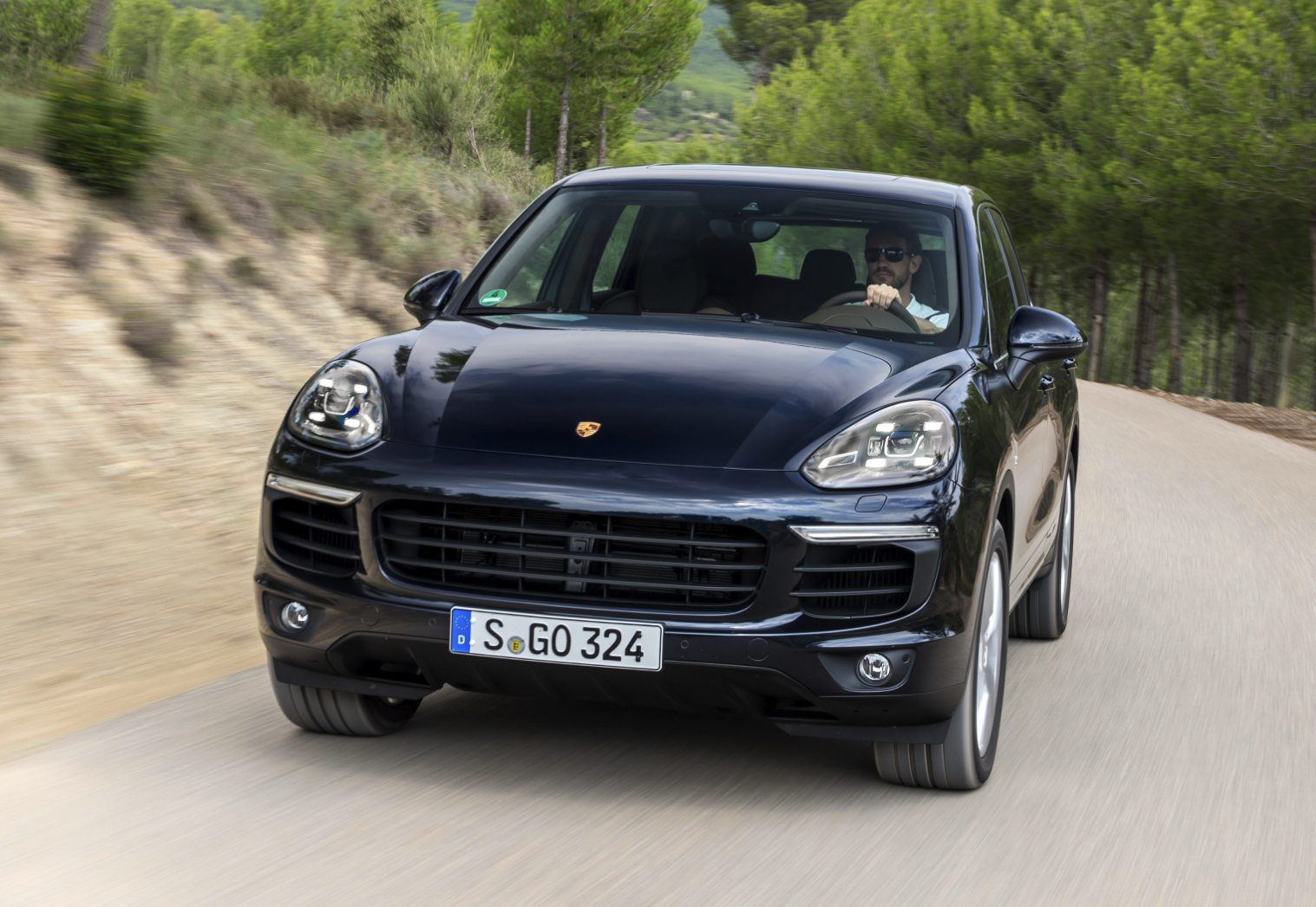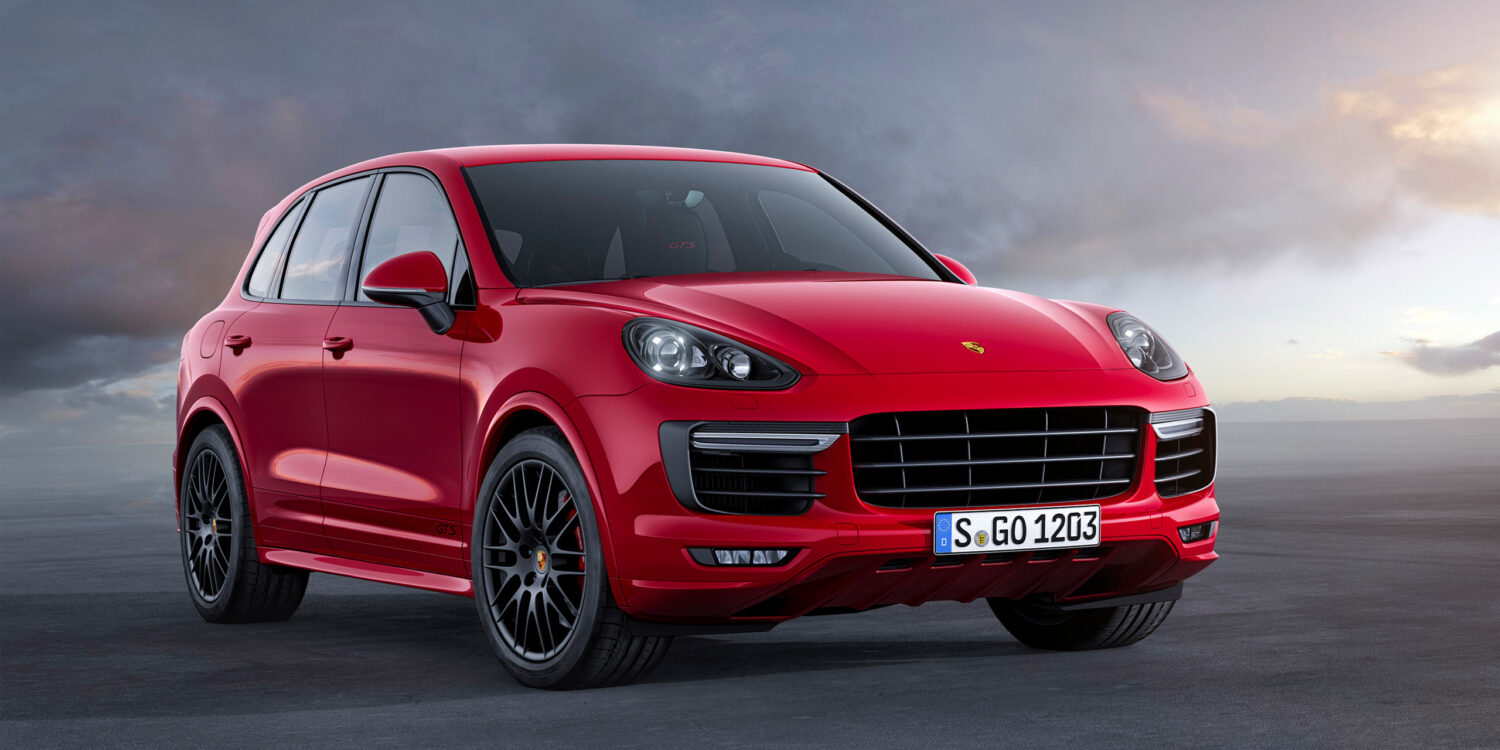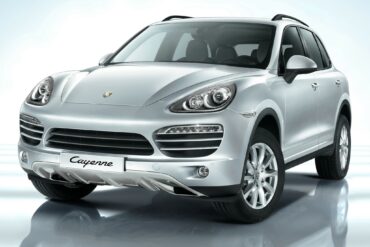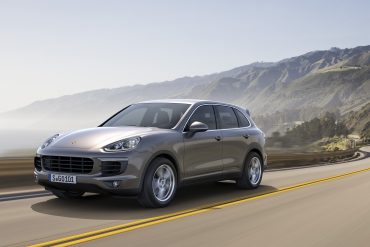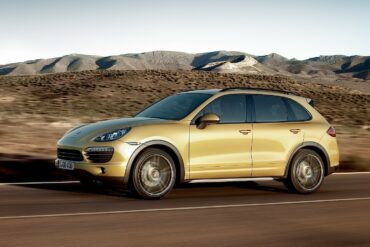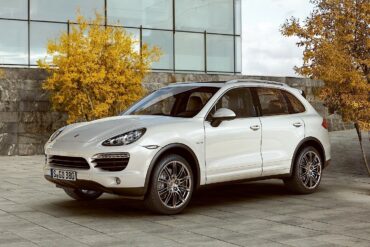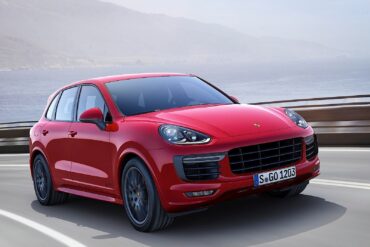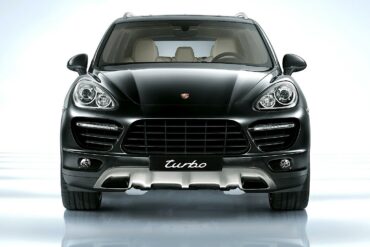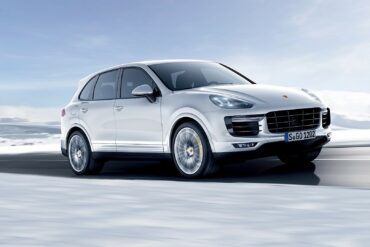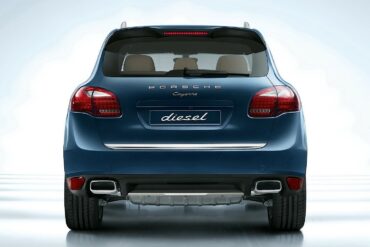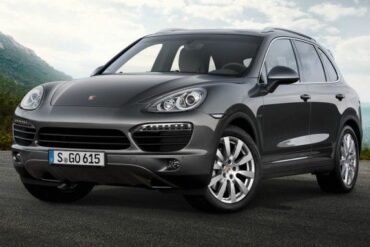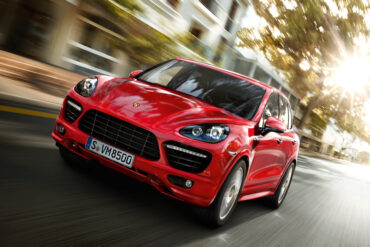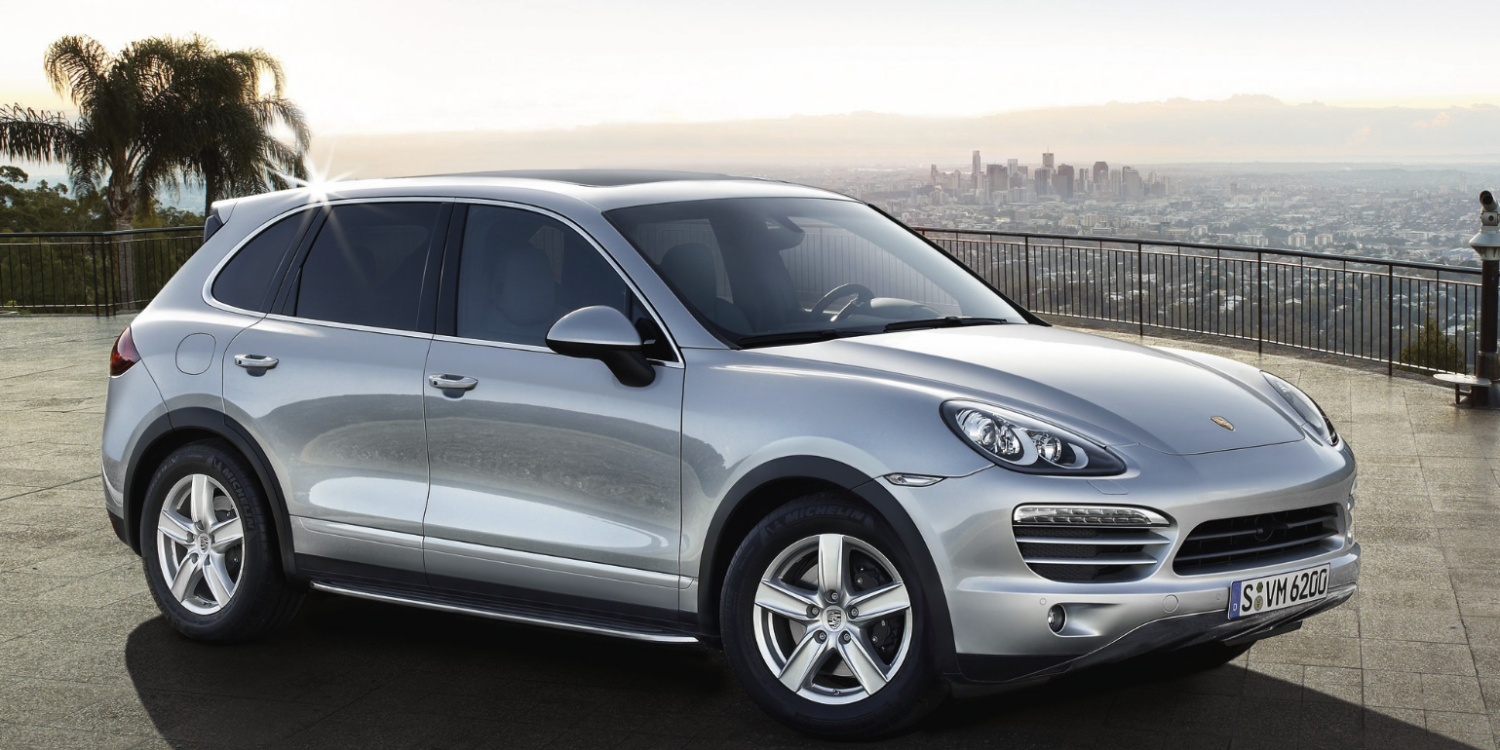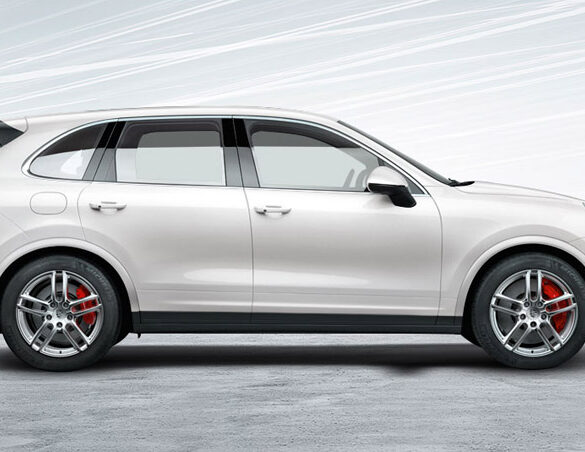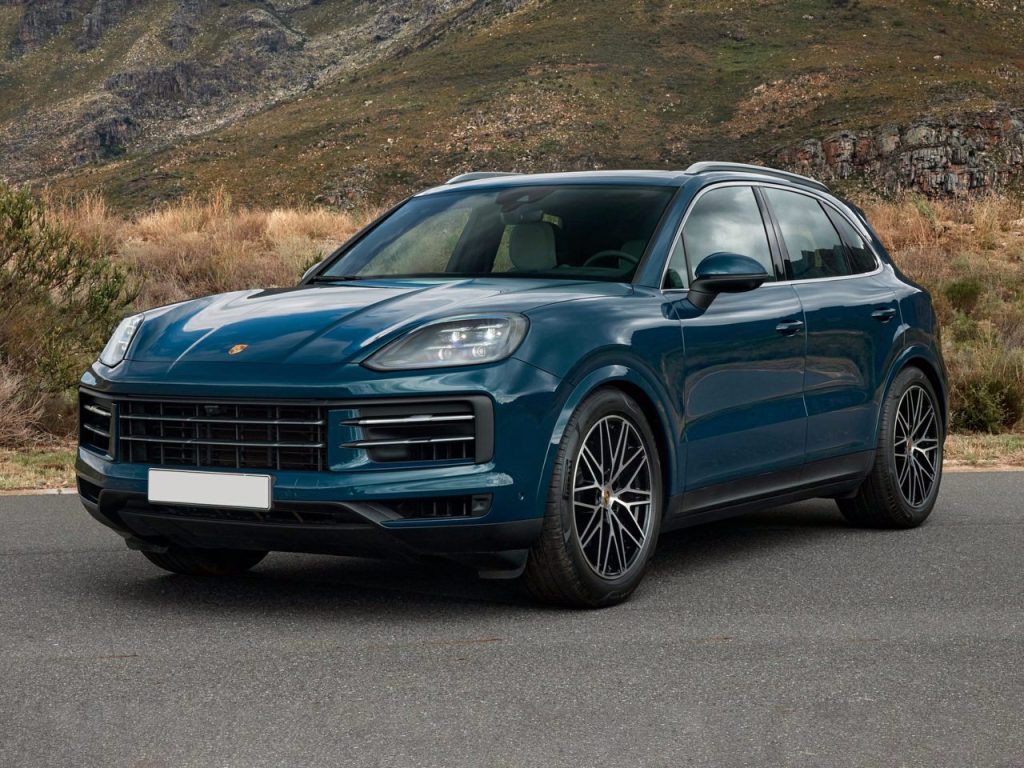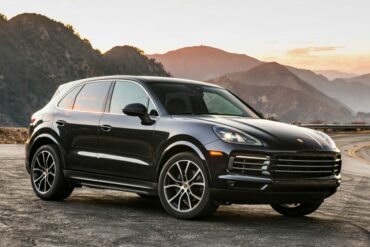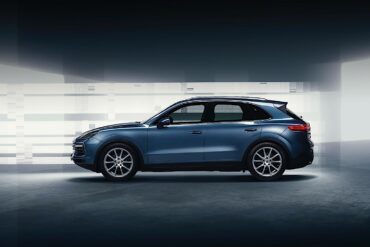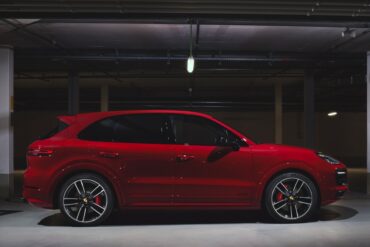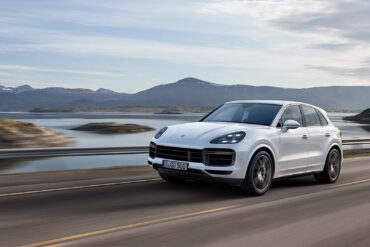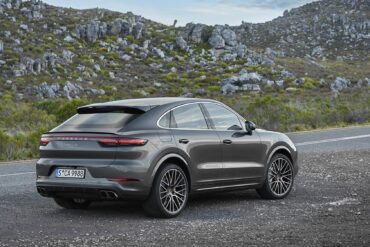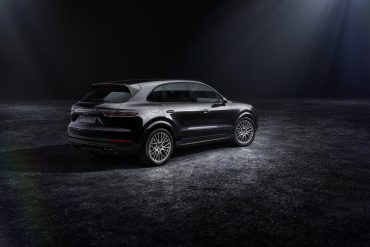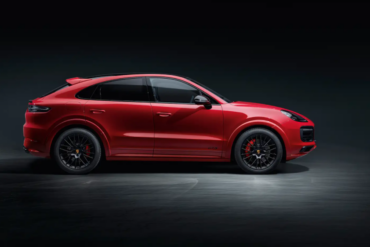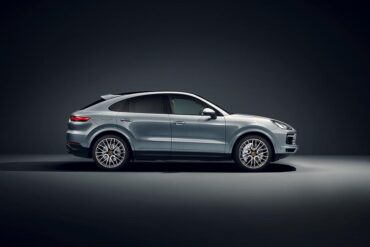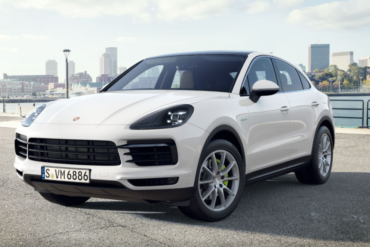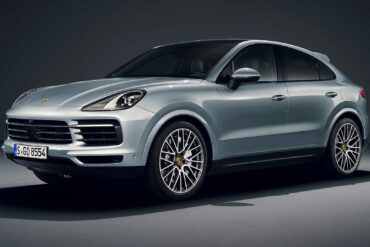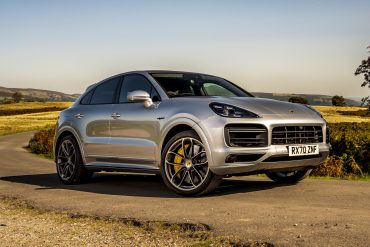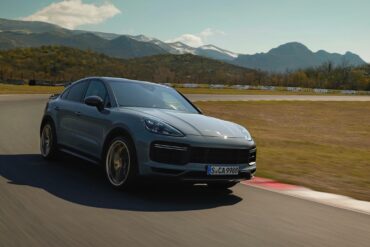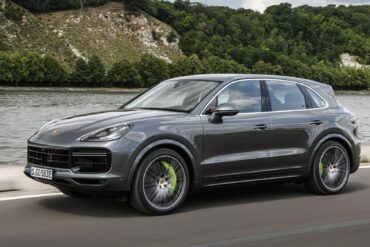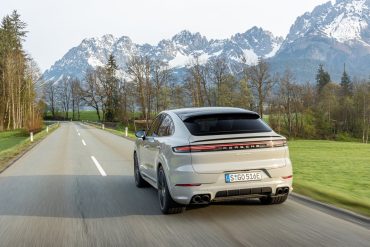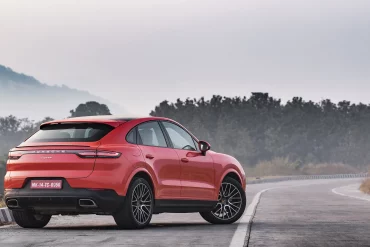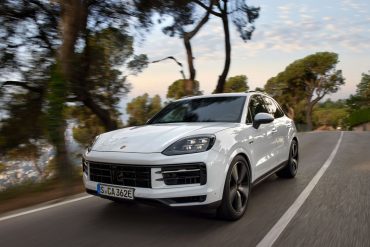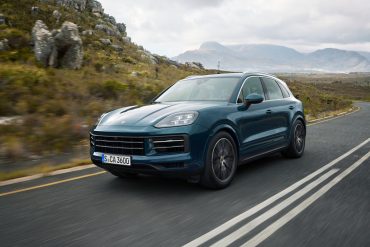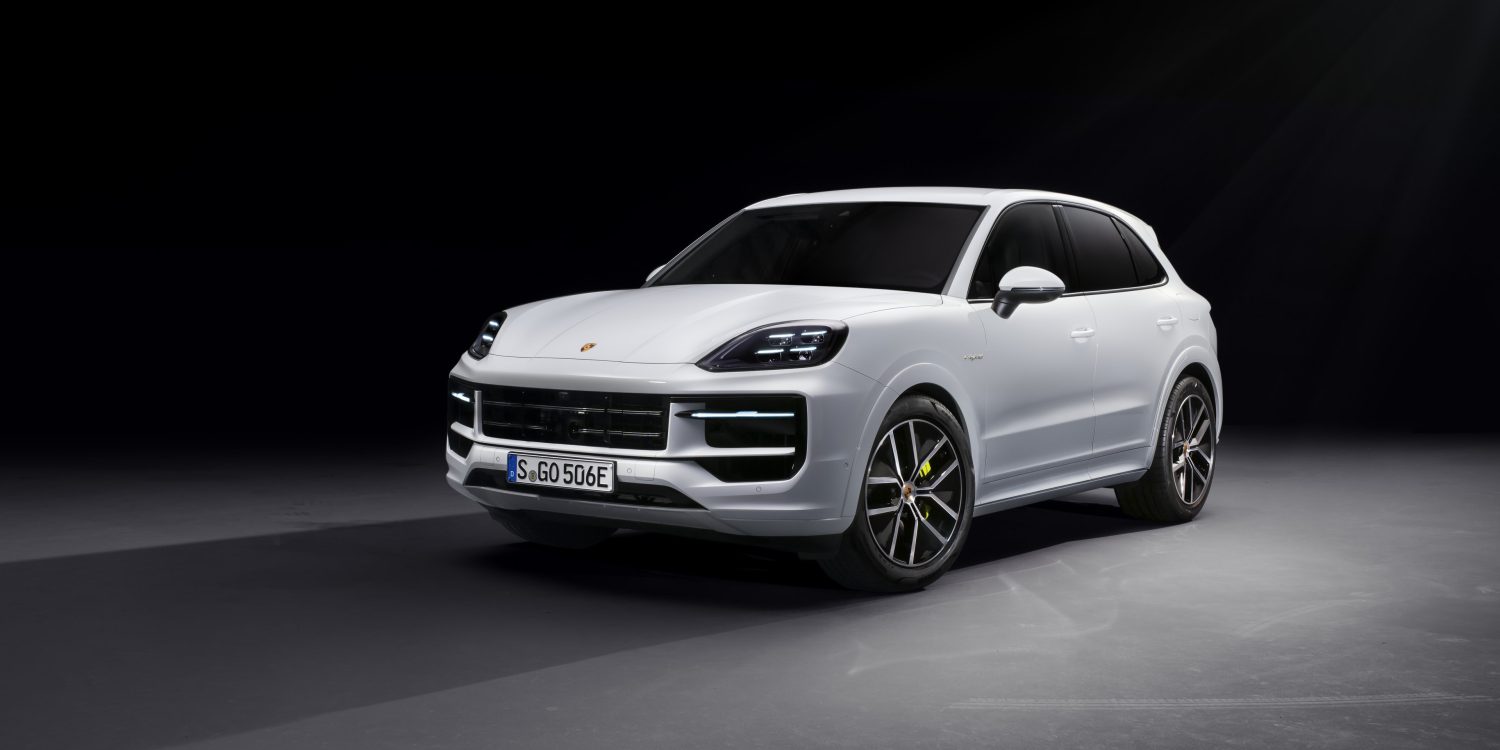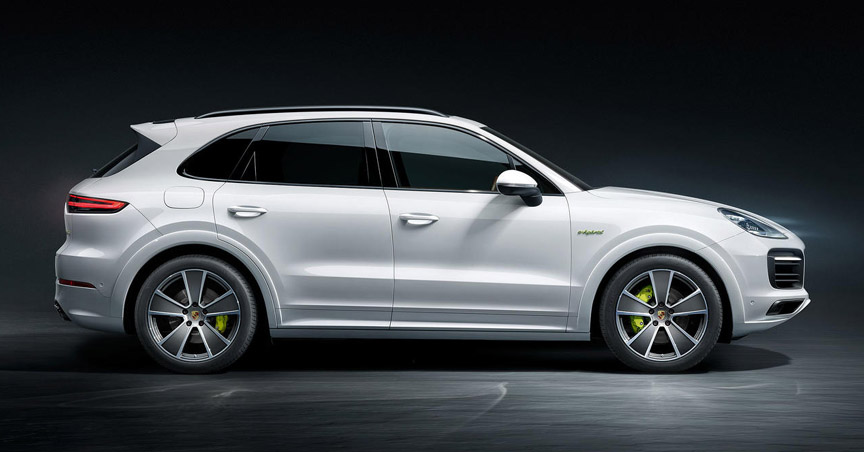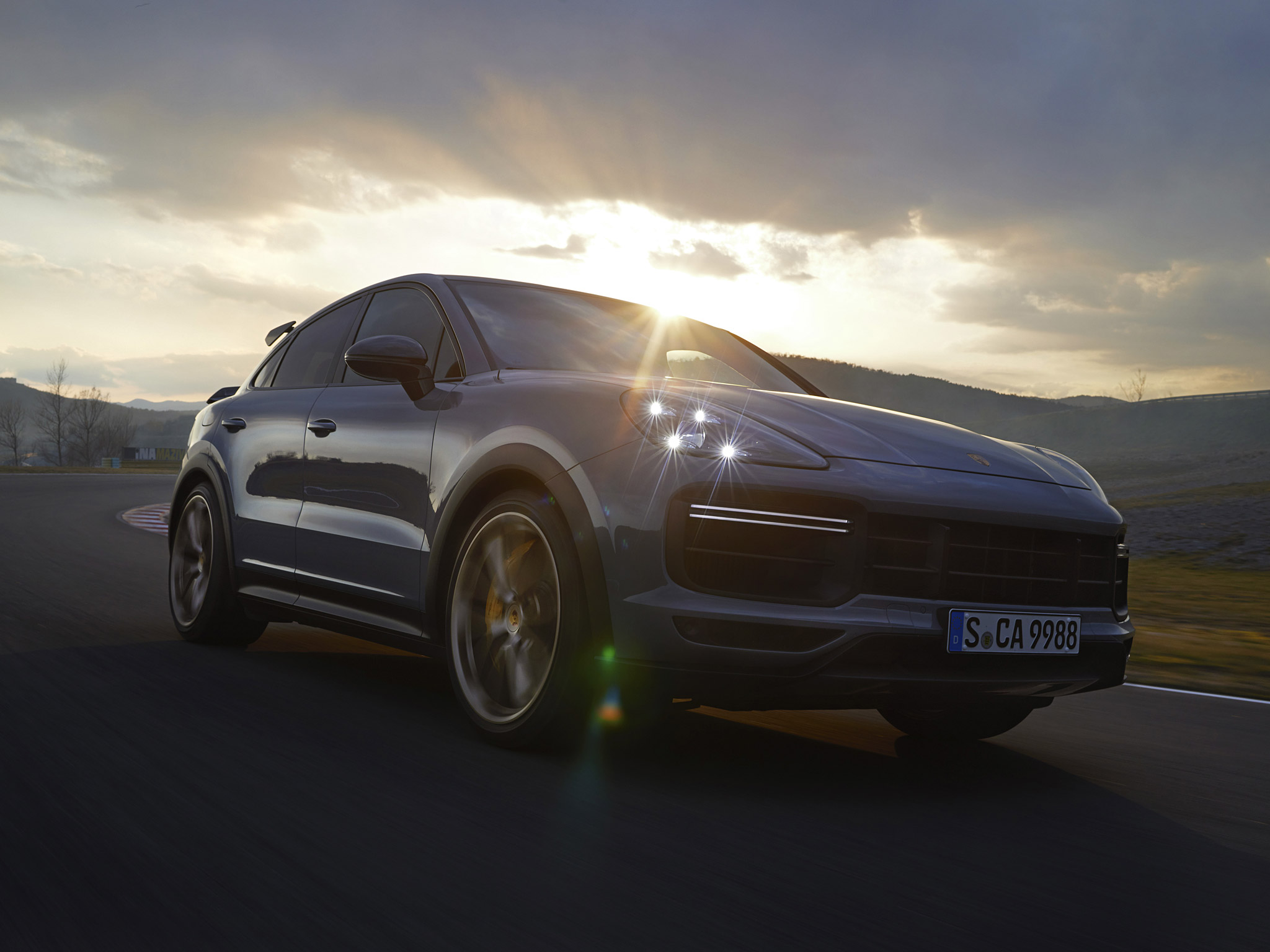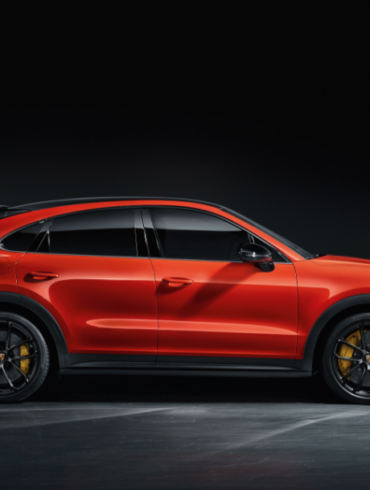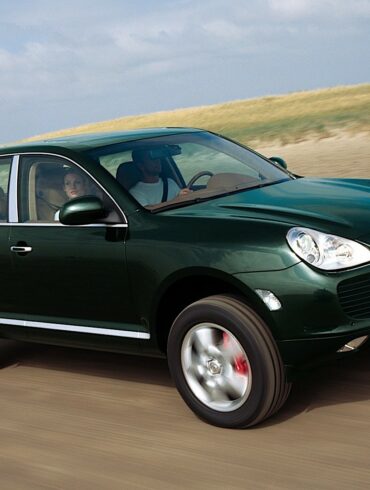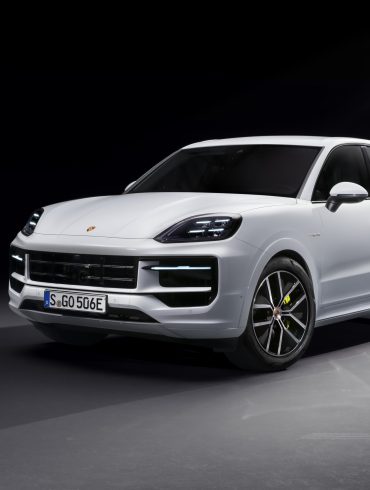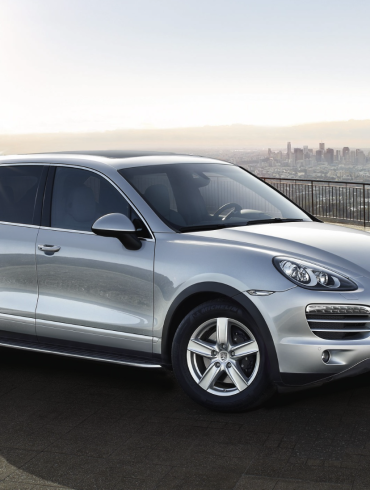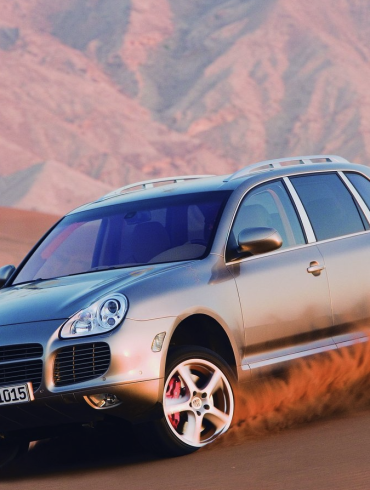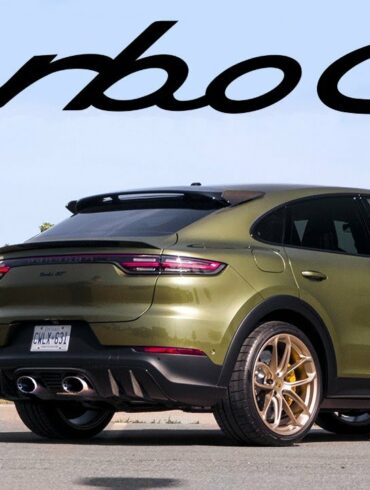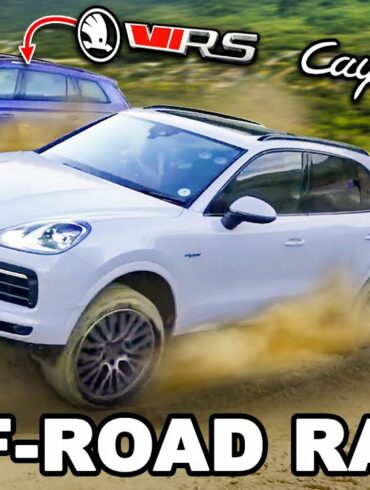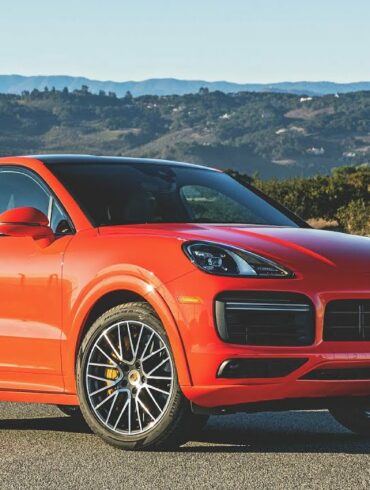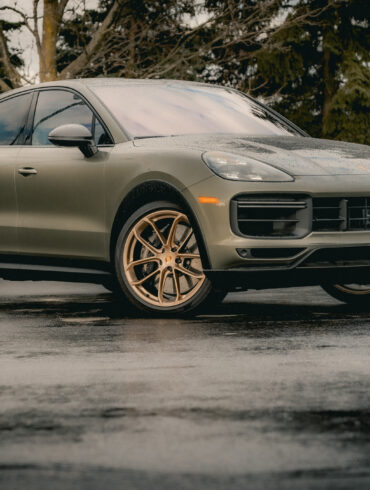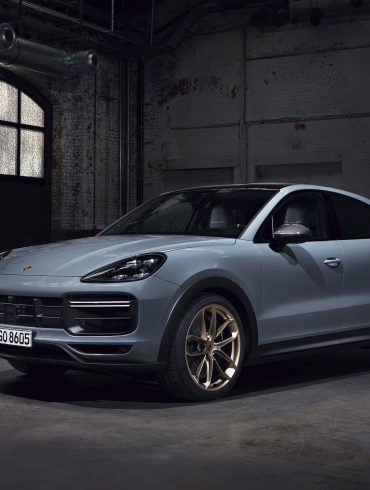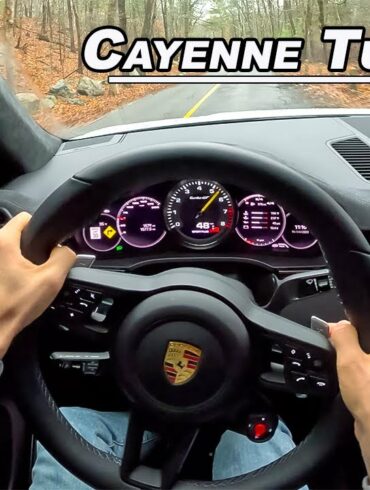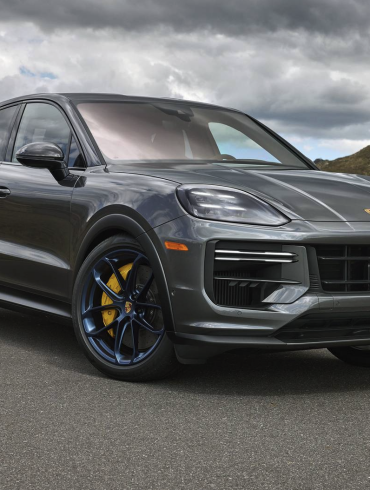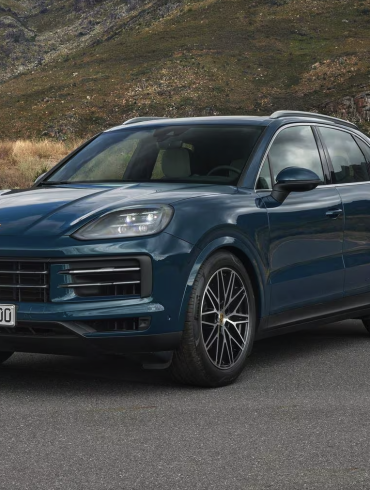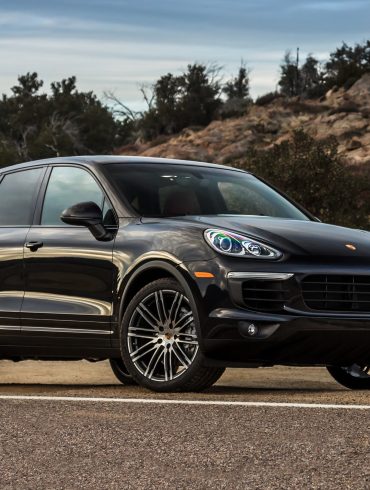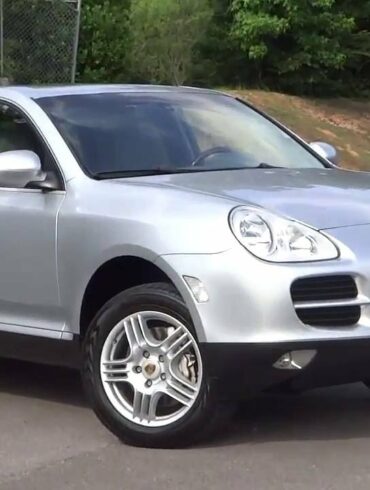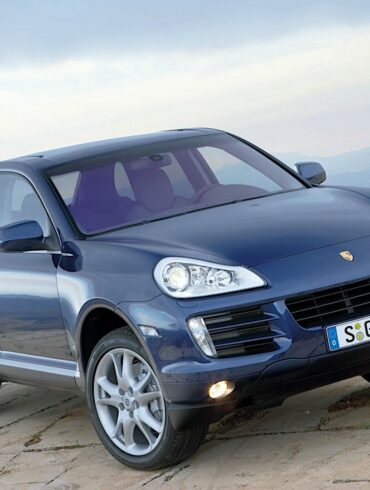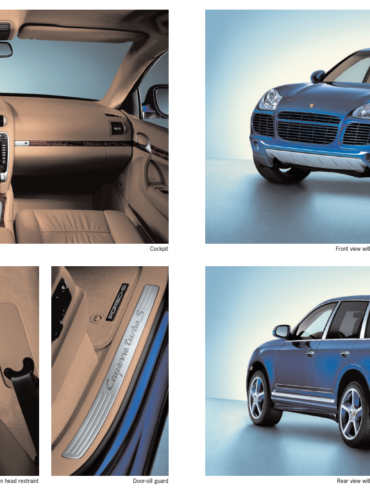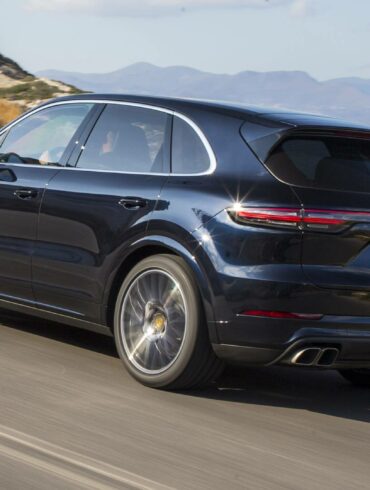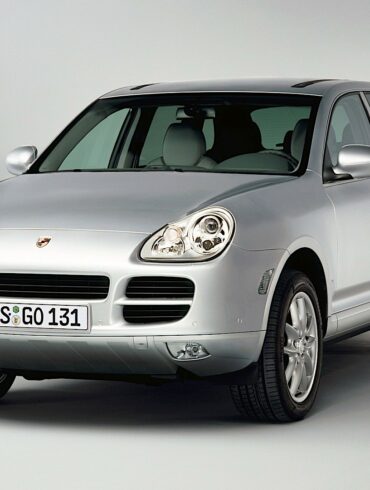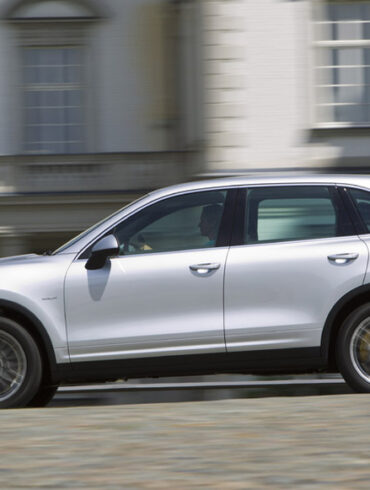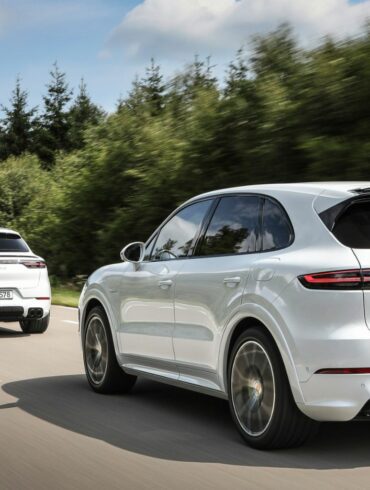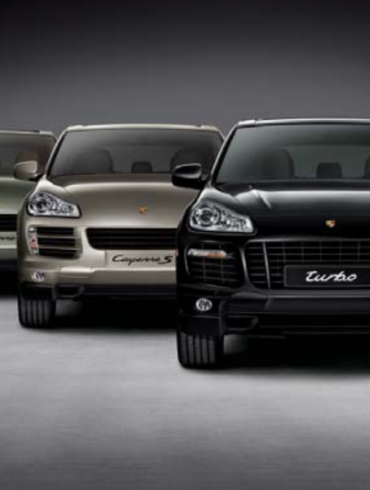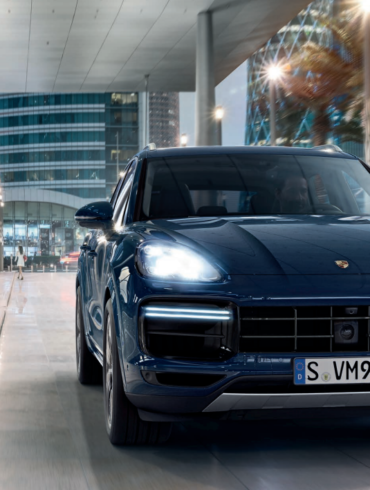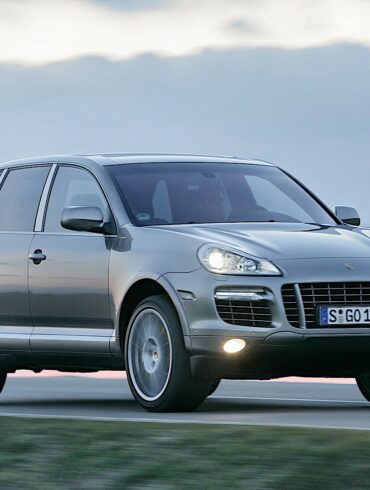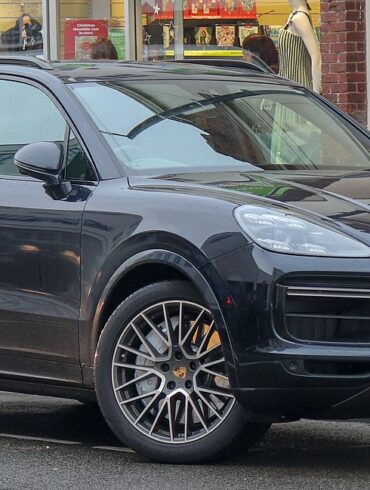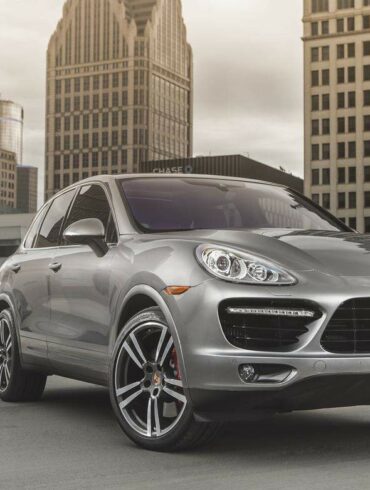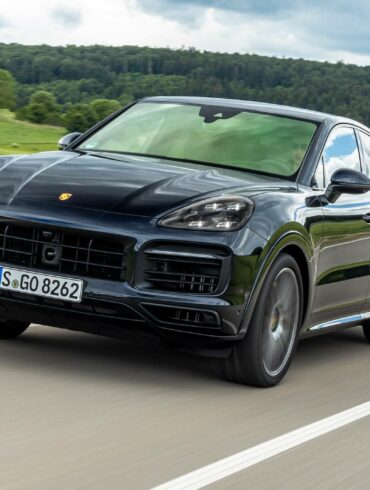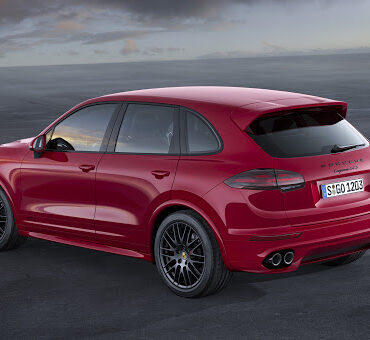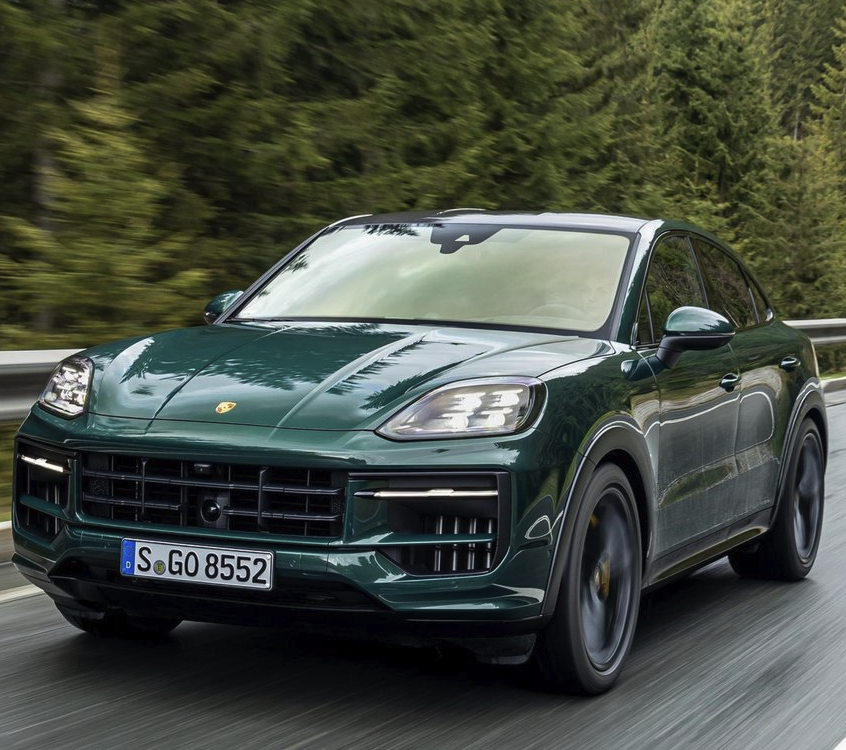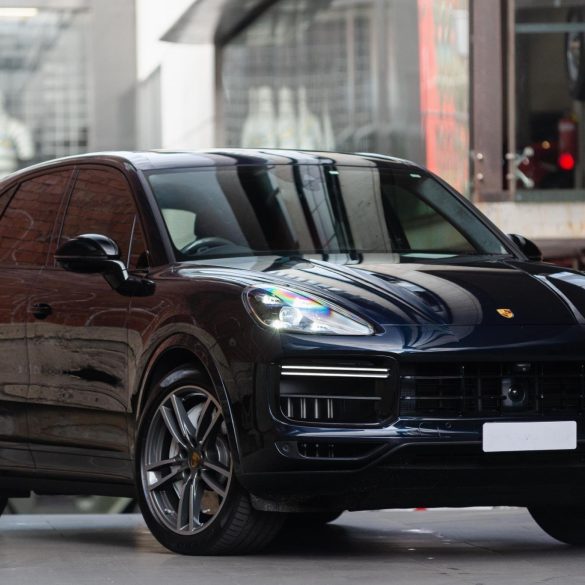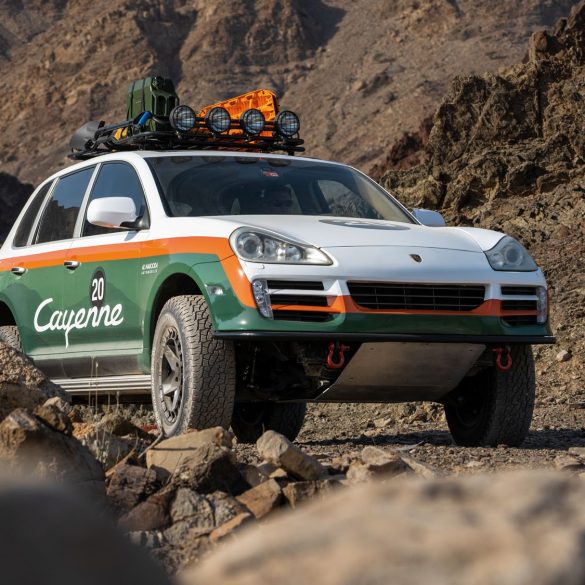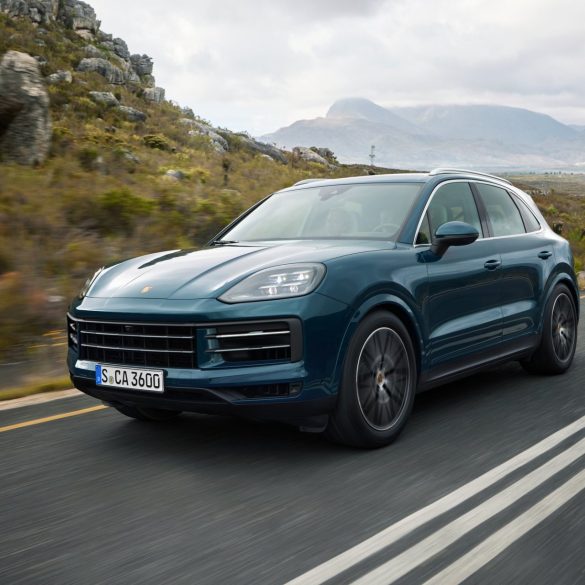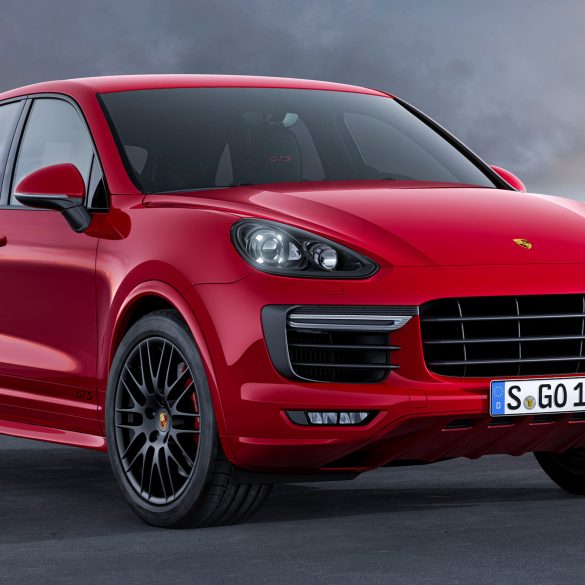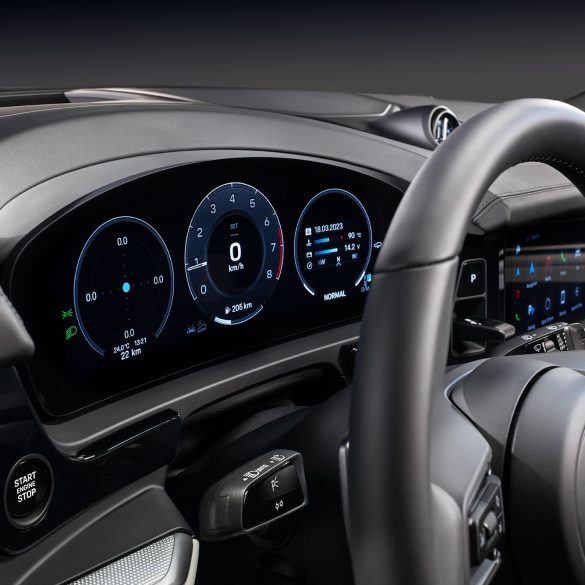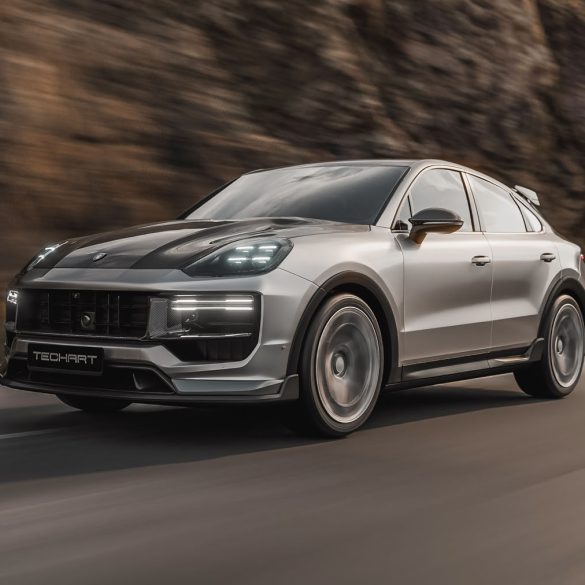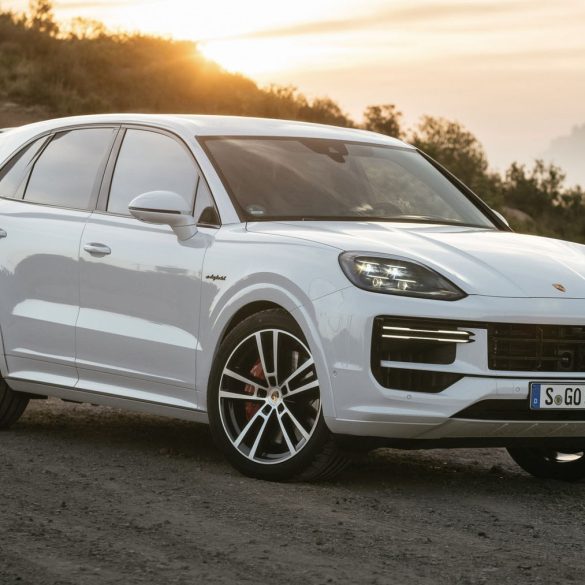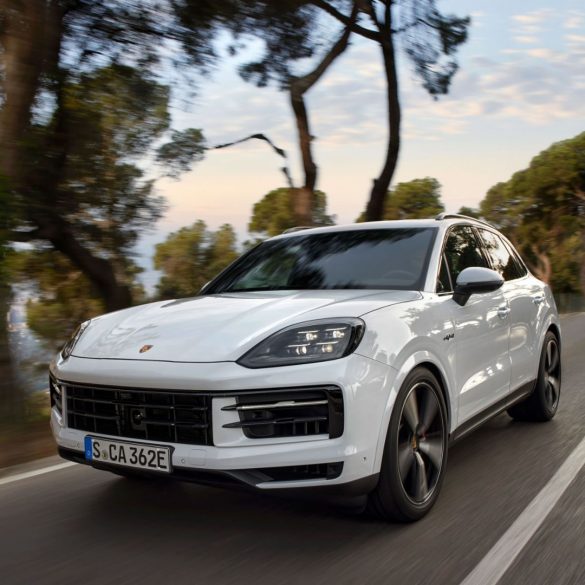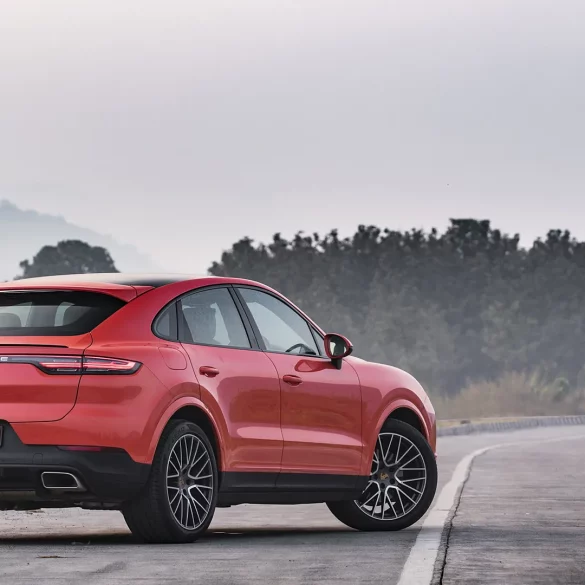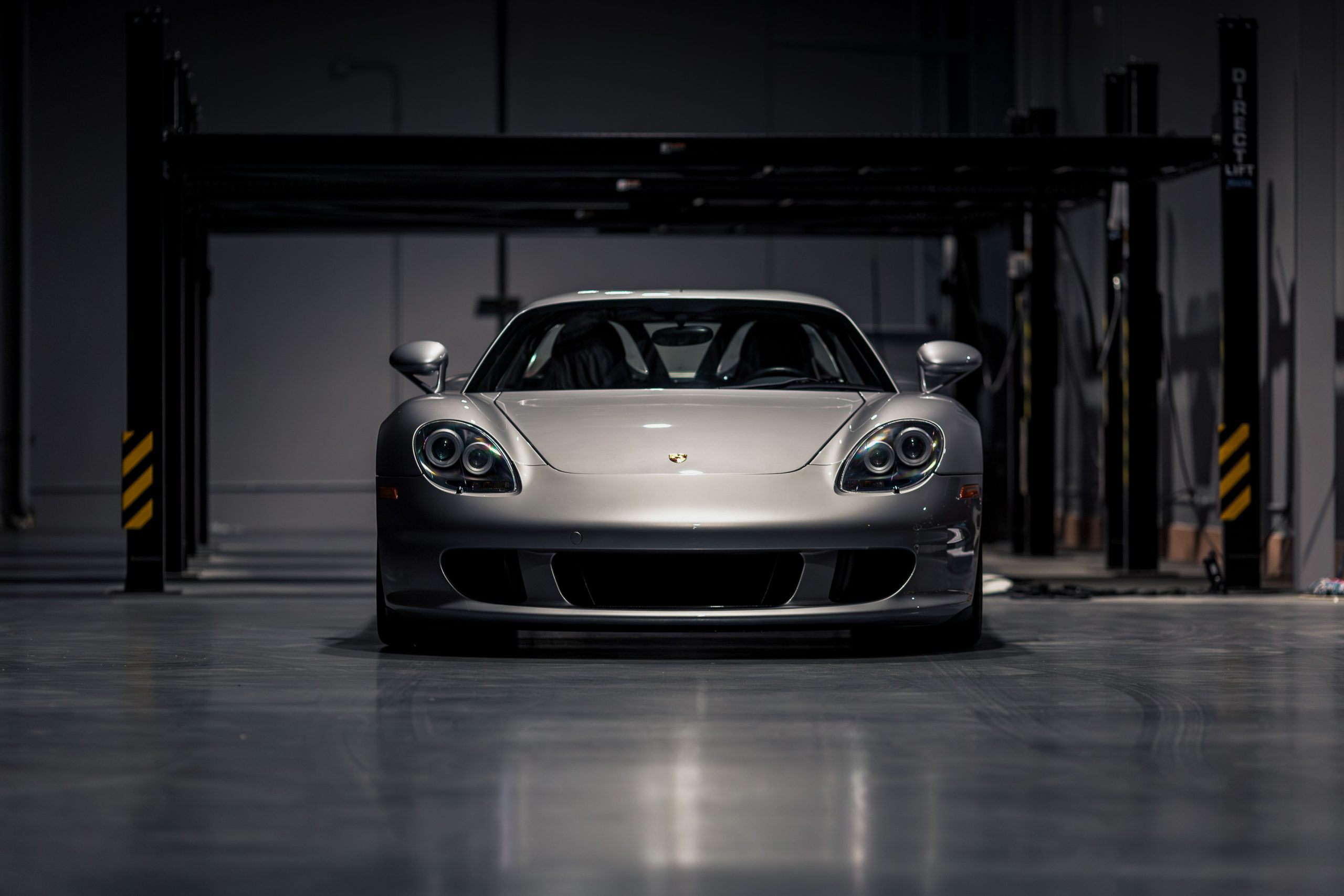Porsche Cayenne - The Ultimate Guide
The SUV That Saved Porsche. Every Generation. Every Model. Everything You Ever Wanted to Know
Generations Primer / 1st Gen / 2nd Gen / 3rd Gen / Research / FAQs / Current Lineup / Updates & News
When Porsche unveiled the Cayenne in 2002, it was a move that shocked purists and thrilled business analysts. A luxury SUV from the brand known for precision sports cars? Sacrilege to some, salvation to others. But the results speak for themselves: the Cayenne didn’t just become a best-seller—it played a pivotal role in keeping Porsche independent and thriving during a time when its future was anything but certain. It combined sports car DNA with everyday utility, reshaping the SUV landscape and forever expanding the definition of what a Porsche could be.
Born from necessity and crafted with typical Stuttgart excellence, the Cayenne was Porsche’s answer to growing global demand for luxury SUVs. Developed in collaboration with Volkswagen, the first-generation Cayenne shared its platform with the VW Touareg, but its heart and soul were unmistakably Porsche. Over the years, it evolved into a full-fledged lineup of high-performance, off-road-capable, and tech-forward models that now appeal to both Porsche loyalists and first-time buyers alike.
In this comprehensive guide, we take you through every chapter of the Cayenne story. From its controversial beginnings to its status today as a cornerstone of Porsche’s success, we cover each generation, every major model and variant, and the technological and design shifts that helped shape the Cayenne’s journey. Whether it’s the raw V8-powered Turbo models, the hybrid breakthroughs, or the athletic GTS trims, you’ll find in-depth specs, performance data, photos, and analysis throughout.
But this page isn’t just for the history buffs. We’ve included buyer’s guides, reliability insights, and ownership tips for each generation to help prospective owners make informed decisions. If you’re already a Cayenne fan or simply curious about how an SUV helped transform Porsche into one of the most profitable carmakers on the planet—this guide is for you.
So buckle up—this is everything you ever wanted to know about the Porsche Cayenne.
The Latest Cayenne Developments
A recent freshening brings interior updates inspired by the Taycan EV, including a curved display screen that houses Porsche's latest infotainment system. Few SUVs can match the Cayenne when it comes to handling agility. But the ride has an underlying firmness, and some jolts punch through. With the base 3.0-liter turbo V6, acceleration is robust once on the fly, but the Cayenne exhibits some initial hesitation off the line and the rough engine stop/start feature undermines smoothness. Interior fit and finish is top-notch, and the seats are very comfortable and supportive. A coupe body style and multiple plug-in hybrids are available with both six- and eight-cylinder engines paired with an electric motor. A GTS version with 493-hp, turbo V8 is new for 2025.
Porsche Cayenne Generations
A Primer
Porsche ventured into the SUV segment almost two decades ago when it presented the Cayenne in September 2002 at the Paris Motor Show. This is just the beginning of a product line success story spanning three generations. The numbers speak for themselves. In the 2007/2008 fiscal year, the Cayenne overtook the Porsche 911 by almost 50,000 units, with an overall production of more than 105,000 units. It proved such a hit that Porsche has continued to innovate and update the platform, now in its third generation.
1st Generation Cayenne
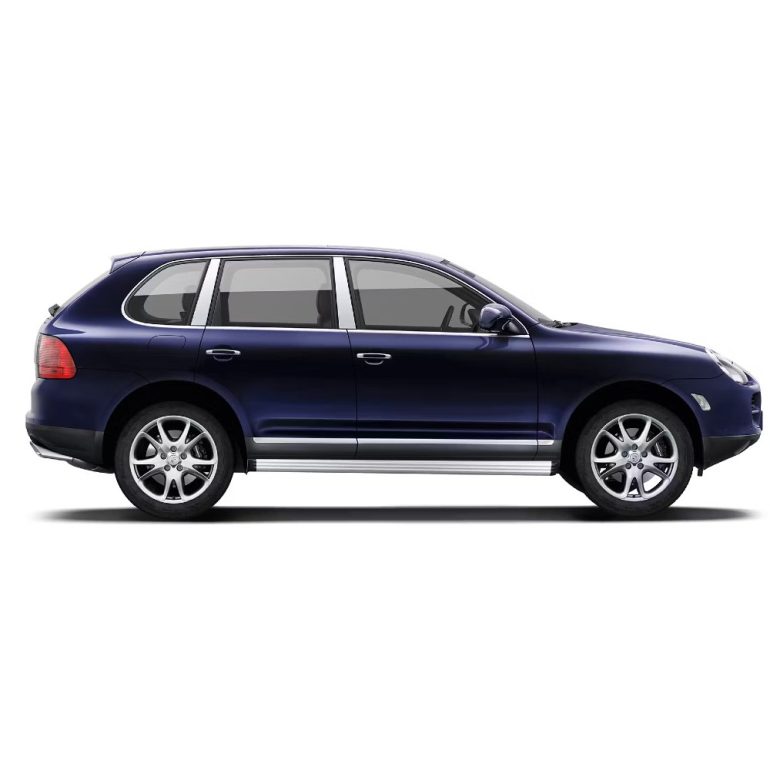
An all-new Cayenne made its debut for the 2019 model year, and despite having all new sheet metal, the look did not change dramatically. As per tradition, Porsche trimmed the power lineup for the debut year. The base model received a 335-hp 3.0-liter turbocharged V-6, the Cayenne S had a 434-hp 2.9-liter twin-turbocharged V-6, and the Cayenne Turbo had a 541-hp twin-turbocharged 4.0-liter V-8.
For 2020, Porsche began offering a four-door Cayenne Coupe with a faster roofline. For 2021, Porsche added the E-Hybrid model, with a combined 455 hp from its 3.0-liter turbocharged V-6 engine and electric motor combo. The new Turbo S E-Hybrid combined the Cayenne Turbo engine with a plug-in hybrid system for a staggering total of 670 hp. The 2021 Cayenne GTS once again took the S engine and bumped it up to 453 hp.
2nd Generation Cayenne
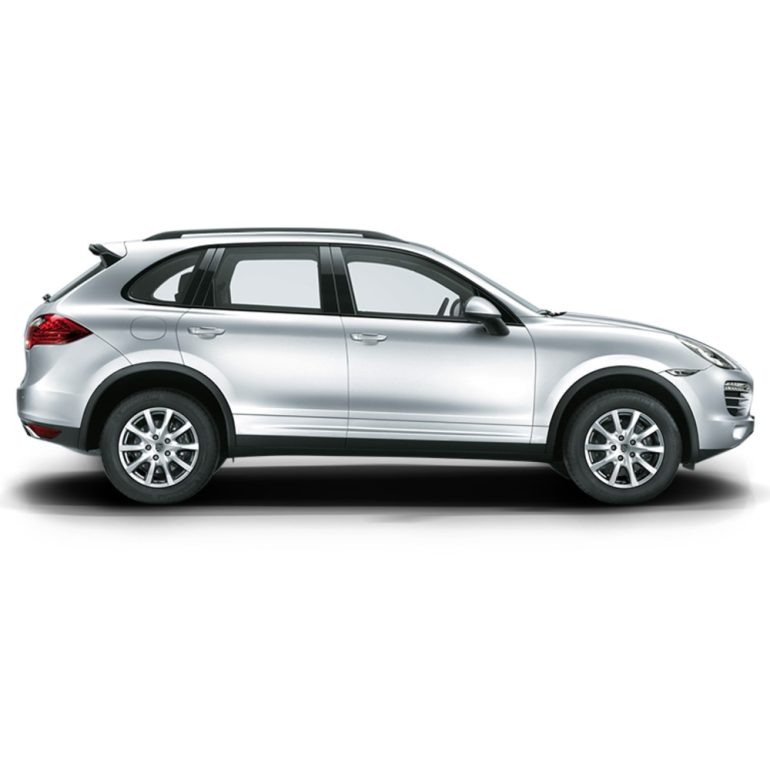
The second-generation Cayenne appeared for the 2011 model year, and Porsche kind-of put forward its green credentials with the introduction of a Hybrid model that combined a supercharged 3.0-liter V-6 and added an electric motor. The rest of the range got a design refresh and an increase in power. The Cayenne V6 now up to 300 hp, the Cayenne S hit 400 hp and the Turbo nudged 500 hp. The Turbo S and GTS models were dropped, but the GTS came back in 2013 with 420 hp alongside a new 240-hp Cayenne Diesel. The Turbo S returned for 2014 with 550 hp.
The Cayenne was facelifted for 2015, and the V-6, Turbo S and GTS models were put on hiatus. The Cayenne S switched from a V8 to turbocharged 3.6 liter V-6, while the hybrid (now called Cayenne S E-Hybrid) was up to 416 hp. The Cayenne Turbo's V-8 delivered 520 hp. The missing engines showed up in 2016, with the base V-6 retaining its 300 hp rating. The GTS once again built on the S' turbocharged V-6 with 440 hp, while the Turbo S offered a mind-twisting 570 hp. Automatic transmissions were now standard across the board. A showy Platinum Edition package was available for 2017 in V-6 and E-Hybrid models.
3rd Generation Cayenne
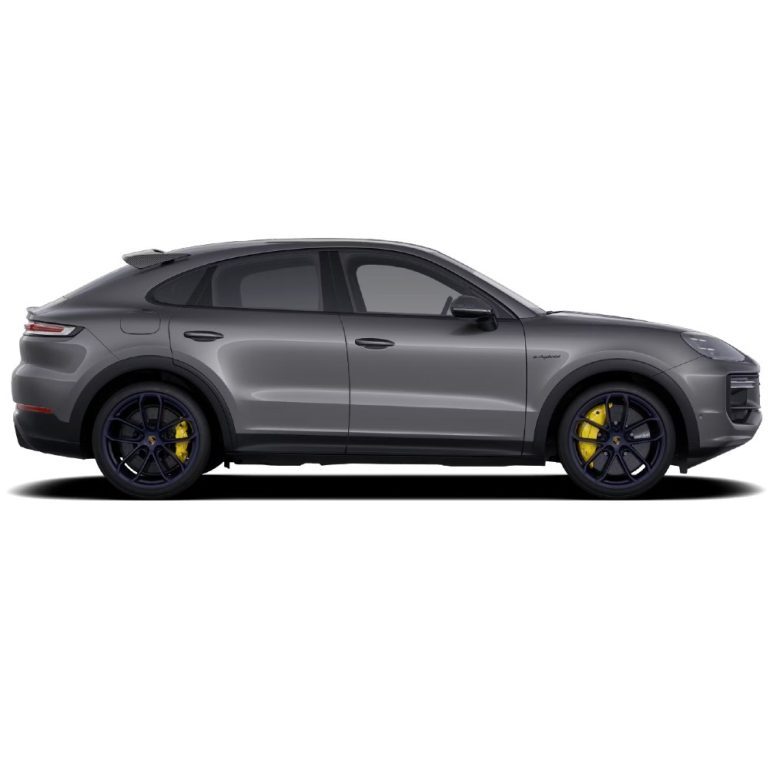
An all-new Cayenne made its debut for the 2019 model year, and despite having all new sheet metal, the look did not change dramatically. As per tradition, Porsche trimmed the power lineup for the debut year. The base model received a 335-hp 3.0-liter turbocharged V-6, the Cayenne S had a 434-hp 2.9-liter twin-turbocharged V-6, and the Cayenne Turbo had a 541-hp twin-turbocharged 4.0-liter V-8. For 2020, Porsche began offering a four-door Cayenne Coupe with a faster roofline. For 2021, Porsche added the E-Hybrid model, with a combined 455 hp from its 3.0-liter turbocharged V-6 engine and electric motor combo. The new Turbo S E-Hybrid combined the Cayenne Turbo engine with a plug-in hybrid system for a staggering total of 670 hp. The 2021 Cayenne GTS once again took the S engine and bumped it up to 453 hp.
The 2024 Porsche Cayenne lineup saw notable upgrades across its powertrain offerings. The base model's 3.0-liter turbocharged V6 received a modest boost, now delivering 348 horsepower and 368 lb-ft of torque. The Cayenne S returned to a 4.0-liter twin-turbocharged V8, replacing the previous V6 and significantly upping the ante with 468 horsepower and 442 lb-ft of torque. Meanwhile, the E-Hybrid variant benefited from a more powerful electric motor producing 174 horsepower and a larger 25.9 kWh battery, extending the electric-only range to around 90 km on the WLTP cycle. These enhancements contribute to a more dynamic, efficient, and well-rounded performance profile across the Cayenne range.
Porsche Cayenne (1st Generation) Basics
Type: 955 & 957
Generation: First Gen (9PA)
Chassis: Chassis E1
Manufacturer: Porsche AG
Production Years: 2002 - 2010
Model Years: 2003 - 2010
Body Style: 5-Door SUV
Layout: Front-engine, AWD
Engines: 3.2 L VR6, 3.6 L VR6, 4.5 L V8 (S), 4.5 L TT V8 (Turbo/Turbo S), 4.8 L V8 (S/GTS), 4.8 L TT V8 (Turbo/Turbo S), 3.0 L turbodiesel V6
Transmission: 6-speed Auto
Official photos: Mar 4, 2002
Premiere: Sept 25 2002
Market launch: December 2002
The Cayenne came along at a time when the Porsche company had some real financial troubles. They had a bunch of sports cars in the lineup that weren't selling particularly well and were not mainstream focused in any way. It was the yuppy brand that built expensive sports cars. Porsche needed something mainstream and nothing was more mainstream in the early 2000s like an SUV. Welcome to the world Mr Porsche Cayenne in 2002. Make no mistake, this SUV saved the sports-car company and set it on a financial course that made it the most profitable car company in the world.
The Cayenne was not without controversy. 911 fans balked at the idea of a heavy SUV from Porsche and many predicted it would be a failure. "How could Porsche do this to us? How could Porsche launch a family SUV with the Porsche logo on it?" All of this before they learned that the Porsche Cayenne would in fact share its platform with a Volkswagen (Volkswagen Group PL71 chassis, which it shares with the VW Touareg and Audi Q7). Fast forward a few years and the first generation Cayenne became the best selling Porsche of all times and stayed that way until the end of its production.
The first generation of Cayenne is really two sub-generations. They are known as the Cayenne 955 and the Cayenne 957. The Cayenne 955 was the original launch Cayenne and sold from 2002 until 2007. Models included the base Cayenne, Cayenne S, Cayenne Turbo, and Cayenne Turbo S models. While there was officially no 2007 model year Cayenne in the United States, you could find them in dealers. On the brink of the global recession in 2007, Porsche launched the 2008 Cayenne model, updated and refreshed and known at the Cayenne 957.
The Cayenne 957 covers all Cayennes sold from 2008 to 2010 model years, and includes those same previous models and introduced the Cayenne GTS and the limited edition Cayenne S Transsyberia and GTS Porsche Design Edition 3 as well as the introduction of a Cayenne Diesel. The 957 was not a big update, consisting mainly of a mild facelift and some better technologies and interior design.
Porsche Cayenne 955 & 957 (1st Gen) Model Guides
The 955 sold from 2003 until 2007 and includes the Cayenne, Cayenne S, Cayenne Turbo, and Cayenne Turbo S models. The Cayenne Turbo was the top dog in the Cayenne range until the Cayenne Turbo S made an appearance in 2006. Technically there were no 2007 MY cars but they were indeed sold in 2007. Below we take in-depth to better get to know all the variants from that first batch of Cayennes. Look familiar? Porsche gave us all the same models for the refreshed 957 Cayenne lineup, including Turbo, Turbo S and the base, plus S variants. We got an all-new Cayenne GTS, with its tweaked suspension tuning, naturally aspirated V8 and design tweaks, it was the pick of the first generation Cayennes.
Porsche Cayenne (2nd Generation) Basics
Type: 958 (985.1 & 958.2)
Generation & Chassis: Second Generation (92A) Chassis E2
Manufacturer: Porsche AG
Platform: VW Group PL72
Production Years: 2010 - 2017
Model Years: 2011 - 2018
Body Style: 5-Door SUV
Layout: Front-engine, AWD
Engines: Gasoline - 3.0 S/C V6 333PS, 3.6 VR6 300PS, 4.8 V8 400PS / 420PS, 4.8 TT V8 500PS / 550PS, Diesel - 3.0 V6 250PS, 4.1 V8 385 PS, Hybrid - 3.0 hybrid S/C V6 380PS, 3.0 PHEV S/C
Transmission: 6-Speed ZF manual, 8-Speed Tiptronic S automatic
Date of unveil by Porsche AG: February 25, 2010, Turbo S October 12, 2012
Premiere: March 2, 2010 at Geneva Motor Show
World market launch: May 8, 2010, Turbo S January, 2013
The second-generation Porsche Cayenne was introduced as a 2011 MY update to the super successful first generation car. The 958 ran through till the 2018 model year, with the two versions known as the 958.1 and 958.2. The second generation Cayenne was built on the VW PL72 platform. Think of it as a solid update, but not revolutionary in any real way. The big change model-wise this generation was the introduction of headline-grabbing Cayenne S Hybrid, which borrowed the 3.0-liter supercharged V-6 from Audi and added an electric motor for a total of 380 hp. Designwise, the Porsche new Cayenne looked smaller and fitter than the first generation. We loved the update and it finally made the Cayenne look good. The second generation Cayenne was actually larger, yet more than 500 lbs lighter. All models had more power, better acceleration and better handling.
Mechanically, the 958 has several changes. First and foremost, Porsche did away with the low range four-wheel-drive transfer case, one of the major areas that allowed them to trim weight. The 6-speed Tiptronic automatic was replaced with an 8-speed unit, while a manual transmission remained only available on the Cayenne base model. Power is up on all models, but the bread-and-butter Cayenne S was still V8-based, its engine also shared by the Porsche Panamera. There were also two new engines introduced to the 958.1 Cayenne Model range, an Audi-sourced 3.0T supercharged V6 with hybrid, and a 3.0 TDI diesel engine, which like the 3.0T is an engine also shared with the Audi Q7.
The interior is a big step up over the 955/957 in terms of modern looks and aesthetics, but core features are similar with power front seats, windows, locks, 60/40 folding rear seats, and leather seating surfaces. Porsche continued to offer an ever-increasing number of options for the Cayenne, with the majority being aesthetic. Other options offered things like bi-Xenon headlights, PASM suspension, park assist, and auto-dimming mirrors. Luxuries like dual-zone climate control are, of course, standard, while PDCC, PASM, and Adaptive Air Suspension are all available options.
The Cayenne was facelifted for 2015. The 958.2 Cayenne saw major changes in terms of the engine power plants, with the V8 option going away entirely on the popular Cayenne S and GTS. The replacement is a powerful and torquey twin-turbocharged 3.6 L V6, providing both better performance and improved efficiency. The Turbo and Turbo S remain the sole V8 Cayenne options, both of which still weigh in with 4.8 L of displacement and twin-turbochargers. The Cayenne S Hybrid became the E-Hybrid, with a plug-in option and florescent yellow brake calipers to easily distinguish the cutting-edge hybrid from its non-electric brethren. The interior of the 958.2 is pretty much the same as the 958.1, save for a new updated steering wheel. Likewise, all the other core components and options carry over from the earlier model, including the 8-speed automatic Tiptronic transmission as the standard and only transmission option. The manual is no longer available on the Cayenne base. The Cayenne Diesel remained on the menu until 2016.
Porsche Cayenne 958.1 & 958.2 (2nd Gen) Models
Porsche stuck with the same model lineup for the second generation Porsche Cayenne. The base Cayenne and Cayenne S were the top sellers as expected, while the Cayenne Turbo and Turbo S remained the premium offerings. Our favorite Cayenne (The GTS) was back again, the perfect balance of sporty and fun. The absolute highlight of this new generation is the world debut of the Cayenne S Hybrid, the first plug-in hybrid in the premium SUV segment. While the Cayenne 955, 957 and 958.1 had permanent 4WD, from 958.2 the drive force was sent to the front axle only when the rear wheels lost grip, like in the 4-wheel-drive 911. This meant the Cayenne finally became a road car and the off-road image was left behind.
Porsche Cayenne (3rd Generation) Basics
Type: 9YA/9YB (9Y0 SUV, 9Y3 Coupé)
Generation: Third Generation
Manufacturer: Porsche AG
Platform: VW Group MLB Evo
Production Years: 2017 - Present
Model Years: 2018 - Present
Body Style: 5-Door SUV/SUV Coupe
Layout: Front-engine, AWD
Engines: 3.0 L Turbocharged V6 / 2.9 L Twin-turbocharged V6 / 4.0 L Twin-turbocharged V8 / 3.0 L Audi turbocharged V6 + Electric motor / 4.0 L Audi-Porsche V8 Twin-turbo + Electric motor
Transmission: 8-Speed Auto
Date of unveil: August 29, 2017
Premiere: August 29, 2017 in Stuttgart Porsche Museum
Market launch: 2018 Model Year (Europe), 2019 Model Year (Non- Europe)
Revealed online on August 29, 2017, the third-generation Porsche Cayenne was a complete redesign from top to bottom and was built on the freshly created Volkswagen Group MLB platform. Production began in 2017 as a 2018 onward model year for Europe while USA and rest of the world got the Cayenne as a 2019 model year onward. It is known as the 9YA and has two main body types, known as the 9Y0 for the SUV and 9Y3 for the new Coupe body style (more on that below).
Any pretense that the Cayenne is a "real" off-roader is gone with the launch of the third generation. This is a pure luxury and performance focused SUV for the road. There, we said it. Lets start with the looks. The latest Cayenne is the most refined design so far, finally getting to a point where we can call the Cayenne handsome and modern. The interiors are updated, clean and organized well with all the tech and touchscreens you could ever want. It is a nice place to sit. The engine options are once again updated, with forced-induction V6 and V8 engines throughout, with gear-shifting handled by a near-perfect 8-speed Tiptronic automatic.
Coil spring suspension remains standard on all models, with an optional active air suspension, except on the Turbo, where air remains standard. Four-wheel-steering is a new-for-2019 option and works to significantly reduce the Cayenne’s turning radius and agility at low speeds, as well as increase stability at high speeds, much like the system used on the GT3 and other performance Porsches. All of the previous high-tech frills like PDCC, PASM, and PSM remain as options or as standard depending on the model, and improved features like an electronically locking active rear differential and torque vectoring improve performance and traction under all circumstances.
Finally, in 2020 Porsche has put out a second version of the Cayenne, the Cayenne Coupe, to compete with the plethora of crossover and SUV options from the competition. The Coupe is essentially a fastback version of the standard Cayenne, with sleeker looks. Versions on offer include most of the normal trims and powerplants, topping out with the Cayenne Coupe Turbo S E-Hybrid, which makes a staggering 670 horsepower and 663 lb-ft of torque and can sprint to 60mph in 3.6 seconds. The GTS model returned for 2021 and is back to V8 power, now with twin-turbochargers. On June 30, 2021, Porsche introduced the Cayenne Turbo GT version. It uses 4.0-litre twin-turbo V8 engine and claimed 3.1 second 0-60 mph.
The third-generation Porsche Cayenne received a significant mid-cycle refresh for the 2024 model year. This update encompassed enhancements to its exterior design, interior features, powertrain options, and chassis components. The 2024 Cayenne's exterior underwent subtle yet impactful changes. The front fascia was reworked to include larger air intakes, restyled headlights, more prominent fenders, and a subtle hood bulge. At the rear, new taillights and a redesigned tailgate contribute to a wider appearance. Additionally, Matrix LED headlights became standard across the range, with optional HD Matrix LED units offering enhanced illumination precision.
Inside, the Cayenne adopted a new dashboard layout inspired by the Taycan, featuring a fully digital 12.6-inch instrument cluster and a 12.3-inch touchscreen for the PCM 6.0 infotainment system. An optional 10.9-inch passenger display is also available. The traditional gear-selector lever was replaced by a smaller toggle switch mounted on the dashboard, freeing up space on the center console. The steering wheel was updated to match the design found in the 911 sports car.
The 2024 Porsche Cayenne lineup saw notable upgrades across its powertrain offerings. The base model's 3.0-liter turbocharged V6 received a modest boost, now delivering 348 horsepower and 368 lb-ft of torque. The Cayenne S returned to a 4.0-liter twin-turbocharged V8, replacing the previous V6 and significantly upping the ante with 468 horsepower and 442 lb-ft of torque. Meanwhile, the E-Hybrid variant benefited from a more powerful electric motor producing 174 horsepower and a larger 25.9 kWh battery, extending the electric-only range to around 90 km on the WLTP cycle. These enhancements contribute to a more dynamic, efficient, and well-rounded performance profile across the Cayenne range.
Porsche Cayenne (3rd Gen) Models
The current Cayenne lineup is pretty standard fare, with all the familiar variants accounted for in the base Cayenne, the Cayenne S, the Cayenne E-Hybrid, Cayenne GTS, Cayenne Turbo, Cayenne Turbo S E-Hybrid and Cayenne Turbo S E-Hybrid available. Porsche introduced the Cayenne Turbo GT version recently which is definitely the top of the range. The biggest model change for the third generation Cayenne was the introduction of a totally new body type, the Cayenne Coupe, available on all models. The entire lineup was updated for the 2024 model year.
Cayenne Generation Hubs
Porsche ventured into the SUV segment almost two decades ago when it presented the Cayenne in September 2002 at the Paris Motor Show. This is just the beginning of a product line success story spanning three generations. The numbers speak for themselves. In the 2007/2008 fiscal year, the Cayenne overtook the Porsche 911 by almost 50,000 units, with an overall production of more than 105,000 units. It proved such a hit that Porsche has continued to innovate and update the platform, now in its third generation.
Cayenne Pictures, Galleries & Videos
The first Cayenne was an ugly thing, but over time, Porsche improved the looks with the second generation and third generation Cayennes. While looks are often in the eye of the beholder, performance isn't and that is one thing that all Cayenne's have been known for, from day one. With that in mind, enjoy our Cayenne galleries, wallpapers and videos for your viewing pleasure.
Porsche Cayenne FAQs
When did Porsche first launch the Cayenne?
The Porsche Cayenne debuted in 2002 (as a 2003 model year) and was Porsche’s first SUV.
Why did Porsche decide to make an SUV? How it is impact its financial future?
Porsche needed a high-volume model to stabilize its finances and remain independent. The growing luxury SUV market presented the perfect opportunity, and the Cayenne was developed to combine utility with Porsche performance. It worked and was a game-changer. The Cayenne quickly became Porsche’s best-selling model and helped fund future sports cars like the Cayman and Panamera. Many credit it with saving the company.
What are the different Porsche Cayenne models?
The lineup includes:
Base (V6)
Cayenne S (V8 or turbo V6, depending on year)
Cayenne GTS (performance-focused V8/V6)
Cayenne Turbo / Turbo S
Cayenne S E-Hybrid / Turbo S E-Hybrid
Cayenne Diesel (offered in some markets)
Cayenne Coupe (introduced in Gen 3)
What’s the difference between the Cayenne and Cayenne Coupe?
The Coupe has a sportier roofline, a more aggressive design, and a slightly tighter rear seat/cargo space, but shares performance with the standard SUV.
What Cayenne models are available with a V8?
V8s are found in:
1st Gen: S, GTS, Turbo, Turbo S
2nd Gen: GTS (4.8L), Turbo, Turbo S
3rd Gen: Turbo, Turbo S E-Hybrid, GTS (4.0L V8), Turbo GT
Are there manual transmission Cayennes?
Yes, but only early 1st Gen base models came with a 6-speed manual—very rare and now collectible.
What do Porsche Cayenne chassis codes mean?
955 – 1st Gen pre-facelift (2003–2006)
957 – 1st Gen facelift (2008–2010)
958.1 – 2nd Gen pre-facelift (2011–2014)
958.2 – 2nd Gen facelift (2015–2018)
9Y0 / 9YA / 9YB – 3rd Gen (2019–present)
What are the major differences between the first, second, and third generations?
1st Gen: Rugged, off-road capable, early tech, older interiors.
2nd Gen: Lighter, more refined, better engines and efficiency.
3rd Gen: High-tech, luxurious, modern infotainment, Coupe variant added.
What engines are available in the Cayenne?
Depending on the generation:
V6 naturally aspirated and turbocharged
V8 naturally aspirated and twin-turbocharged
Diesel (limited markets)
Plug-in hybrid and Turbo S E-Hybrid
Is the Porsche Cayenne reliable?
Later models (especially Gen 2 and up) are quite reliable with proper maintenance. Early Gen 1 models had issues like coolant pipe failures and driveshaft problems.
What’s the best Cayenne for the money?
The 957 GTS offers excellent performance, V8 sound, and rugged styling at a relatively low price. The 958.2 S E-Hybrid is a great blend of efficiency and power.
Which model years should I avoid?
Avoid early 955 models (2003–2004) unless fully sorted. Post-facelift 957 and 958.2 models are better bets.
Join Our Porsche Community
Sign up for our weekly Porsche newsletter. The latest Porsche news, rumors, reviews and more delivered to your inbox. Cool Porsche stuff perfect for the flat-six obsessed.


